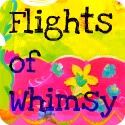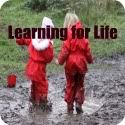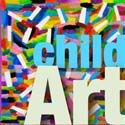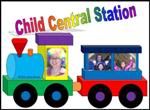Getting children outside to play can pose a real challenge to early childhood educators within Australia. International readers may be wide-eyed and stumbling over their words questioning, ‘What?! … Why?!’ at this early point in the discussion. Yes, it is true that we do have a magnificent climate all year ’round, but that in itself is the problem I believe. Climatic extremes are not the everyday experience of the average Australian, and this lack of experience has unfortunately led most Australians to determine that our incredibly mild Winters represent bad weather. In Australia, Winter temperatures rarely fall below zero degrees celsius and snow doesn’t even enter the equation for the cities dotting the coastlines where the bulk of our population resides. It really is a relative to scenario that is almost too ridiculous for words. By way of comparison, if educators in Scandinavian countries were restricted by the same weather prejudices that drive thinking here in Australia, Scandinavian children would never see the light of day!
“… forest and nature-centered schools are not unheard of around the world, in Scandinavia they positively abound. According to the Danish Forest and Nature Agency, over ten percent of Danish preschools are nestled in forests or other natural settings. While these 500 or so schools differ in terms of surroundings, they all place the natural world squarely at the center of early childhood development.”
Early Nature Lessons in Denmark’s Forest Preschools.
As an advocate for the importance of outdoor play in the lives of children, I have had to arm myself for battle in order to secure what I know to be in the best interests of the children. In the process, I have had to battle with fellow educators and parents alike. It is all about changing an entrenched mindset fuelled by a misguided cultural construct regarding what represents bad weather. How have I armed myself to wage this battle? With facts! I have armed myself with research evidence and set myself on the path of re-educating the masses with a dogged determination and a don’t back down attitude! I am prepared to be unpopular (and it is usually only temporary) to do what I know to be right for the children within my care.
The following is a brief excerpt from a flier that I provide to all parents at our service as we head into the cooler months.
Winter Wet Weather Play
The weather is gradually changing as we move through Autumn and on into Winter. We love to encourage the children to observe the changes that are happening in their environment as they play and engage with nature. Our approach is reflected in this quote:
“There is no such thing as bad weather, just different types of weather” ~ John Ruskin
*(Or perhaps, There is no such thing as bad weather, just poor clothing choices!)
“There is something primal and deeply important about being outside. It doesn’t make any difference to the child whether it is hot or cold, windy or rainy, the outdoors beckons too them.” ~ Bev Bos.
So just keep in mind that we will be venturing outside every-day and appropriate clothing is essential. Preschool is certainly not the place to worry about being ‘fashionable’. Make sure your children have layers of clothing which will help them self-regulate according to changing conditions. Warm waterproof jackets are ideal in winter to protect the children against the ‘wind-chill’. A raincoat is not a great choice as they do tend to be stiff and awkward, thus restricting movement. We have sets of waterproof pants and jackets at preschool which the children must wear during Winter if they wish to play with water. We suggest that ‘gumboots’ are a great investment for outdoor play.
It is important to note that we are bound by the National Quality Framework, and it is regard as a hallmark of quality, to provide children with access to the outdoor environment at all times.
Quote (page 86) Guide to the National Quality Standard (www.acecqa.gov.au) “Wherever possible, children need opportunities to be outdoors as much as indoors. This can be achieved with well-designed integrated indoor and outdoor environments that are available at the same time”.
Through discussions held with staff and parents who were reluctant to allow children access to the outdoors during Winter, these are some of the concerns that were raised:
- The personal comfort of the staff, children and parents on duty
- Perceived health concerns for the children
- Possible challenges for staff in ensuring that the children are adequately dressed
- Concerns about parent opinion if educators allow children outside in wet/cold weather conditions
And here are the responses I provided to staff through a Memorandum:
- Staff, children and parents on duty should come to preschool prepared for time outdoors. For early childhood educators, working outdoors is, without question, a requirement of our job. Being prepared may include bringing adequate warm clothing: jackets, gloves, beanies, boots and a wet weather coat.
- Children become ill due to a virus or bacterial infection, not from weather conditions. Children are much more likely to become ill in warm, overcrowded indoor environments where viruses and bacteria are able to readily multiply and can freely circulate through the heating system.
- There are many aspects of an educators job that are challenging. In Summer, we have to ensure that children wear a hat and apply sunblock. In Winter we have to ensure that the children are appropriately attired for wet weather. There is no escaping the repetitive nature of reminding children of these requirements. That is our job. We now have 25 wet weather jackets and pants for this purpose. Furthermore, it is important to note that we should never deny children their right to outdoor play because we find it challenging. It is our job to manage children’s access to outdoor play.
- There are many examples in the ECE field where it is our responsibility to educate the parents attending our service as well as the children. As ECE professionals, we are meant to advocate for the rights of children and ensure that we place what is in their best interests above what parents may desire for their children. Through no fault of their own, it is fair to say that parents are often misguided when it comes to knowing what is in the best interests of their children. Unfortunately, there is a plethora of false advice floating around in the parenting sphere. We all know that many of our parents would possibly love to see a more ‘academic’ curriculum in our preschool, and yet we do not teach the children within our care how to read and write. Why? Because as ECE professionals, we know that we are not mandated to under the NEYLF (or VEYLF) and that it is not in the children’s best interests to do so. Outdoor play should be viewed in the same light. Current research is informing us that children now, more than at any other time in history, are disconnected from the natural environment. Furthermore, the research indicates that this is/will have far-reaching implications for children’s learning and development. I will ensure that I provide staff with some reading regarding these research findings.
I urge all educators in Australia to get on board and wage this battle. I know that our workload is heavy already and some challenges seem insurmountable, but on so many levels, this battle is worthy of your energy, for the sake of our children.
15 examples of the great learning that can take place in the outdoor environment:
- THERE IS LEARNING IN A PRECIOUS LIFE LOST
- REAL WORK: MAKING DINOSAUR LAND
- WORM FARM
- OUR MUDPIE KITCHEN
- A PUDDLE FOR TWO
- MUDPIES AND OTHER GARDEN TREATS
- PLANET ARK TREE PLANTING DAY
- PLANTING UP OUR VEGETABLE GARDEN
- A SCARECROW FOR OUR VEGETABLE GARDEN
- I CLIMBED A TREE TODAY
- ROCKS ON THE MOVE
- OUR NEW WATER WALL
- INTERNATIONAL MUD DAY
- SANDPIT ENGINEERS
- ON A BEAUTIFUL AUTUMN DAY
I hope you enjoy the journey! 🙂










































